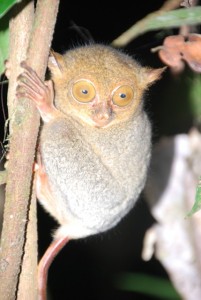Two weeks in Sabah
/Off the plane in Sabah, no real itinerary, but some understanding of the key things to see and do in this northern part of Borneo:
- Scuba diving
- Rainforests
- Mountain treks
- Beaches
- Orang-utans
Scuba Diving
Mabul Island is off Sabah’s south-west coast. The water temperature hovers between 25-28C and each day seems a carbon copy of the previous – warm and with no rain. Paradise? Not sure, but if there is something better, it must be pretty special.
The clear water just off Mabul’s beach allows ample interactions with shoals of fish such as winged pipe fish, crocodile fish, forsters barracuda and trumpet fish to name a very few. We see snake eels, reef squid and the only sea horse on Mabul Island, as well as countless up close and personal moments with the languid green and hawksbill turtles. The turtles are the star attraction, especially when ninety-six babies hatch from the nursery where they have been protected and are released into the sea. Tiny, they clumsily run towards the moon’s reflection on the water and are then at mercy of the tides which will take them away from this island for up to eight years until they are ready to breed, at which time they will make their way back to this very place. There is a great romance in this, for no matter where they are taken there is only one home.
Kinabatangan River
Huts in the jungle, by the fast flowing Kinabatangan River, allow night time treks in search of nocturnal life and day time small boat cruises on a quest for elephants and snow leopards, eagles and orang-utans or, most often, macaques. Always in familial groups, they are playful, curious and protective of each other. At times interested in the countless humans in small boats on the river, seemingly playing up to the attention; at other times, nonplussed. They are the stars of the river cruises.
Night time jungle walks illustrate how out of our natural environment we are – you can hear the animals inhabiting the jungle, you can sense them, but they are very difficult to spot. Spiders, snakes in trees, sleeping birds, stick insects are all found, but the star is the tarsier. Described by one of our party as the Yoda-like monkey, it’s easy to see why from the photo here. Celebrities the world over could take a leaf from the tarsier’s book – dozens of camera flashes in quick succession as everybody jostles for the best position – people trying to be quiet, but not really containing their excitement. All the while, the tarsier remains unruffled with the occasional turn of head to look in the other direction and give this group of paparazzi a better shot. On that point, did I mention the tarsier can rotate its head a full, Exorcist channeling, 270 degrees.
Sepilok
It’s all about the old man of the jungle in Sepilok – it is home to the world famous Orang-utan Sanctuary which was established almost 50 years ago to rehabilitate orphaned or injured young orang-utans in preparation for life back in the wild. Within the 4,300 hectare property, up to 80 orang-utans live freely whilst receiving twice daily feedings should it be required. The viewing platforms to witness the feedings are four deep at both morning an afternoon sessions and are a respectful distance from the feeding orang-utans. We are told that on the previous day, a former orphan who graduated from the sanctuary returned for the first time in 9 years, appearing to just check in and let everyone know things were well, and then made his way back to the jungle.
As we wait for the afternoon feeding, there is a close encounter with three orang-utans who are out for a stroll around the public areas of the sanctuary. Walking within no more than a metre of the engrossed crowd of people, it is quite clear that all three are loving the attention. Finding the most convenient pole, the most gregarious of the three sits just above head height of his audience and poses for photos…yes, poses for photos. Once he feels that all the people on his left have good shots, he turns to his right and gives his best “Blue Steel” impression. We are told by some after hours visitors to the park later that night that they witnessed an orang-utan turning a tap on and drinking from it, before opening an umbrella that he had found.
Mount Kinabalu
Mount Kinabalu is one of the first things you notice when you step off the plane in the capital Kota Kinabalu, it dominates the skyline to the east of town. 4,095 meters tall and made of granite, the mountain has a dark, forbidding presence about it and has deep spiritual significance for local people. The trip to the top is a two-day “joy” – kicking off just after breakfast on day one and covering 6 kilometres straight up…ok, not straight up, but it felt like it at times. Starting amongst rain forest, after about an hour you are within the cloud line and the temperature drops consistently at about the same rate the wind increases. The path leads you in to a false sense of security – relatively flat and well maintained in the early parts, it becomes steeper and rockier as you make your way to the Laban Rata resthouse at 3,270 metres where you will spend the night, or really, part of the night. Most people arrive mid-afternoon and rest before dinner and early to bed – it’s a 2am start to the summit.
2am wake up calls are never pleasant, especially as day one provided an entrée for what awaits. It’s cold and, with no moon to be seen, the only light is the multitude of head lamps you can see and the lights of the villages and towns 4,000 metres below. We are lucky though that the wind has decided that 2am is not a civilised time to be up and about, but later in the morning makes its presence felt towards the summit. Clambering over rocks, using ropes to assist while scaling steep rock slopes, the summit is not easy to identify in the dark and feels, at times, as if it is unreachable. As dawn approaches, it becomes obvious where the summit is – the excitement of seeing the end point is counter balanced by recognising that the last hundred metres or so is steep and there will no walking, more crouching and searching for both foot and hand holds to make it all the way.
Success…obligatory photos and then get off the top as quickly as possible – it’s seriously cold.
Back to the chalet, BIG breakfast, and then three hours back down and a well earned early night.
…and to finish
Mañana Resort – balm for weary legs and tired muscles. Reachable only by boat, villas directly on the beach, no internet and nothing to do but while away the hours swimming, napping, reading, talking to the owners and the occasional sneaky beer. The weather is warm, so too the water and the welcome from our hosts. It’s called Mañana (tomorrow in Spanish) because one of the earliest guests, for weeks on end, kept putting off his departure until tomorrow. A great place to end a trip to Borneo.







